
Golden Snub-nosed Monkeys
The golden snub-nosed monkey[3] (Rhinopithecus roxellana) is an Old World monkey in the subfamily Colobinae. It is endemic to a small area in temperate, mountainous forests of central and Southwest China. They inhabit these mountainous forests of Southwestern China at elevations of 1,500–3,400 m (4,900–11,200 ft) above sea level. The Chinese name is Sichuan golden hair monkey (四川金丝猴). It is also widely referred to as the Sichuan snub-nosed monke, Of the three species of snub-nosed monkeys in China, the golden snub-nosed monkey is the most widely distributed throughout China.
Snow occurs frequently within its range, and it can withstand colder average temperatures better than any other non-human primate. Its diet varies markedly with the seasons, but it is primarily a herbivore with lichens being its main food source. It is diurnal and largely arboreal, spending some 97% of its time in the canopy. There are three subspecies. Population estimates range from 8,000 to 15,000 and it is threatened by habitat loss.
Biologists presently identify three subspecies of this monkey, which can be distinguished primarily by the length of their tails, as well as by certain skeletal and dental features. The dense human settlement of much of eastern Sichuan and the Han River valley of southern Shaanxi creates geographical separation between the three subspecies.
Moupin golden snub-nosed monkey, Rhinopithecus roxellana roxellana. This subspecies is found in the mountainous areas flanking the Sichuan Basin from the west and north. According to the estimates made between 1995 and 2006, the population includes some 10,000 individuals, living mostly in Sichuan. Of them, some 6,000 lived in the Min Mountains of northern Sichuan, 3,500 in the Qionglai Mountains further west, and 500 in the Daxiangling and Xiaoxiangling ranges of south-central Sichuan. Smaller groups are also found just north of Sichuan border, in the border counties of Gansu (Wen County; about 800 individuals in eight troops) and Shaanxi (Ningqiang County, about 170-200 individuals in one or two troops). (See below gallery #3)
Qinling golden snub-nosed monkey, Rhinopithecus roxellana qinlingensis. According to an estimate published in 2001, this subspecies included some 3,800-4,000 individuals (about half of them adults) in 39 in Qinling Mountains of southern Shaanxi. The Qinling Mountains are separated from the more southern Min–Daba Mountains belt by the wide and comparatively densely populated Han River valley. (See first two galleries)
Hubei golden snub-nosed monkey, Rhinopithecus roxellana hubeiensis. Members of this subspecies reside in the Daba Mountains (in particular, their Shennongjia section) of the westernmost Hubei (Shennongjia Forest District, Fang, Xingshan and Badong counties) and the northeastern Chongqing Municipality. According to a 1998 estimate, the population included 600–1,000 individuals in five to six troops. In 2005, the management of the Shennongjia Nature Reserve reported that the population had grown between 1990 and 2005 from 500 to over 1200. (See Gallery #4 for probable image from 1992)
























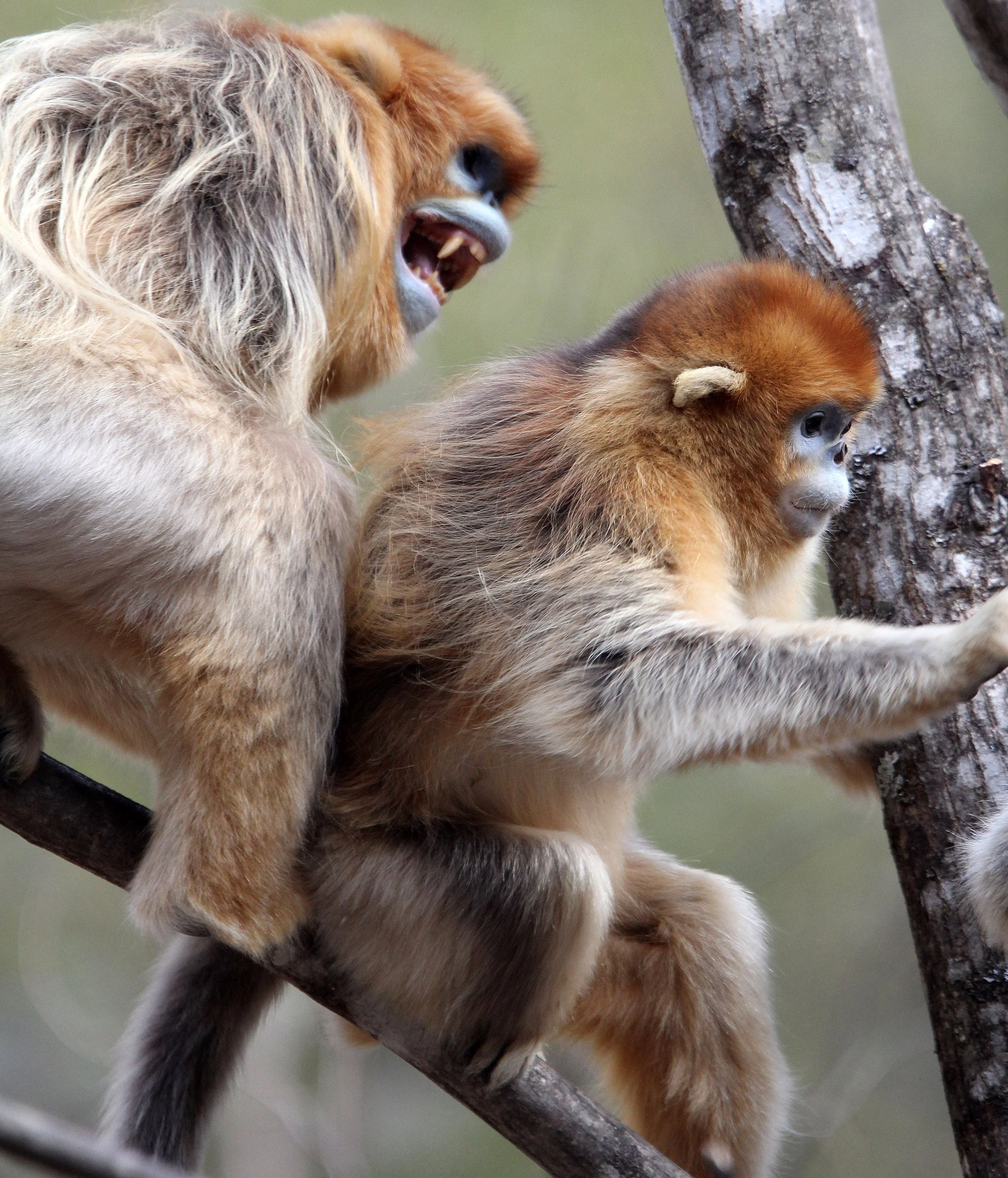
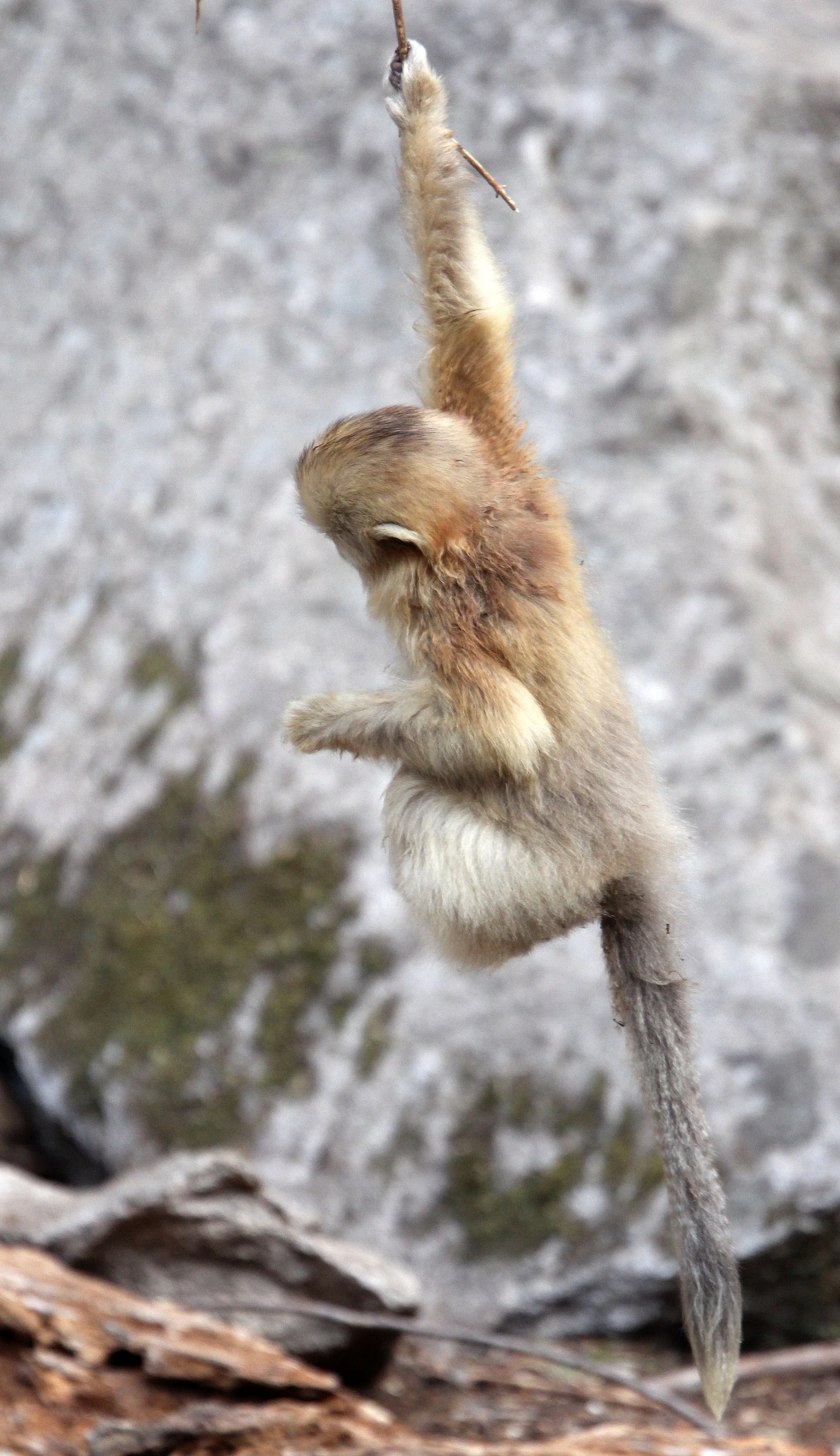
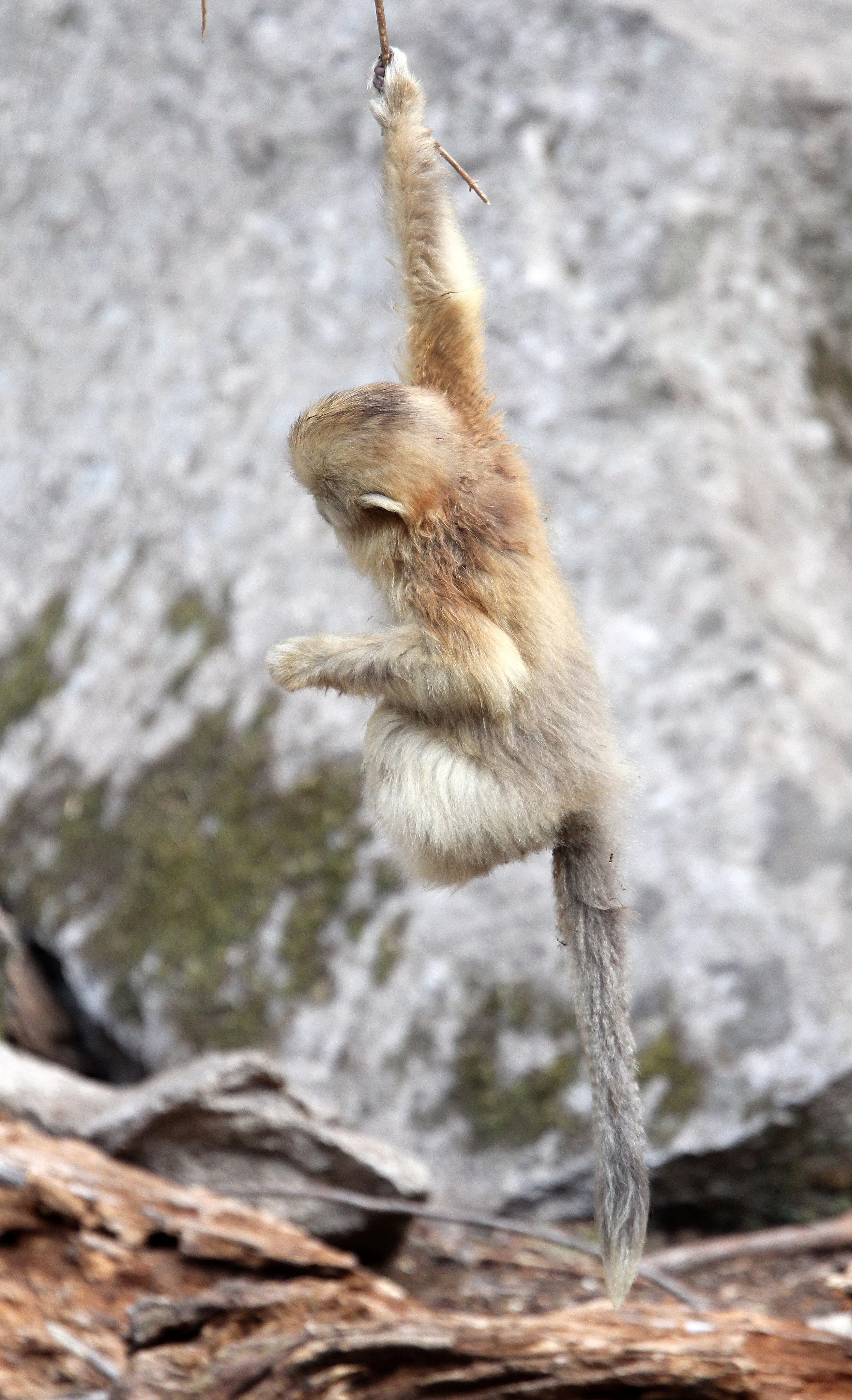













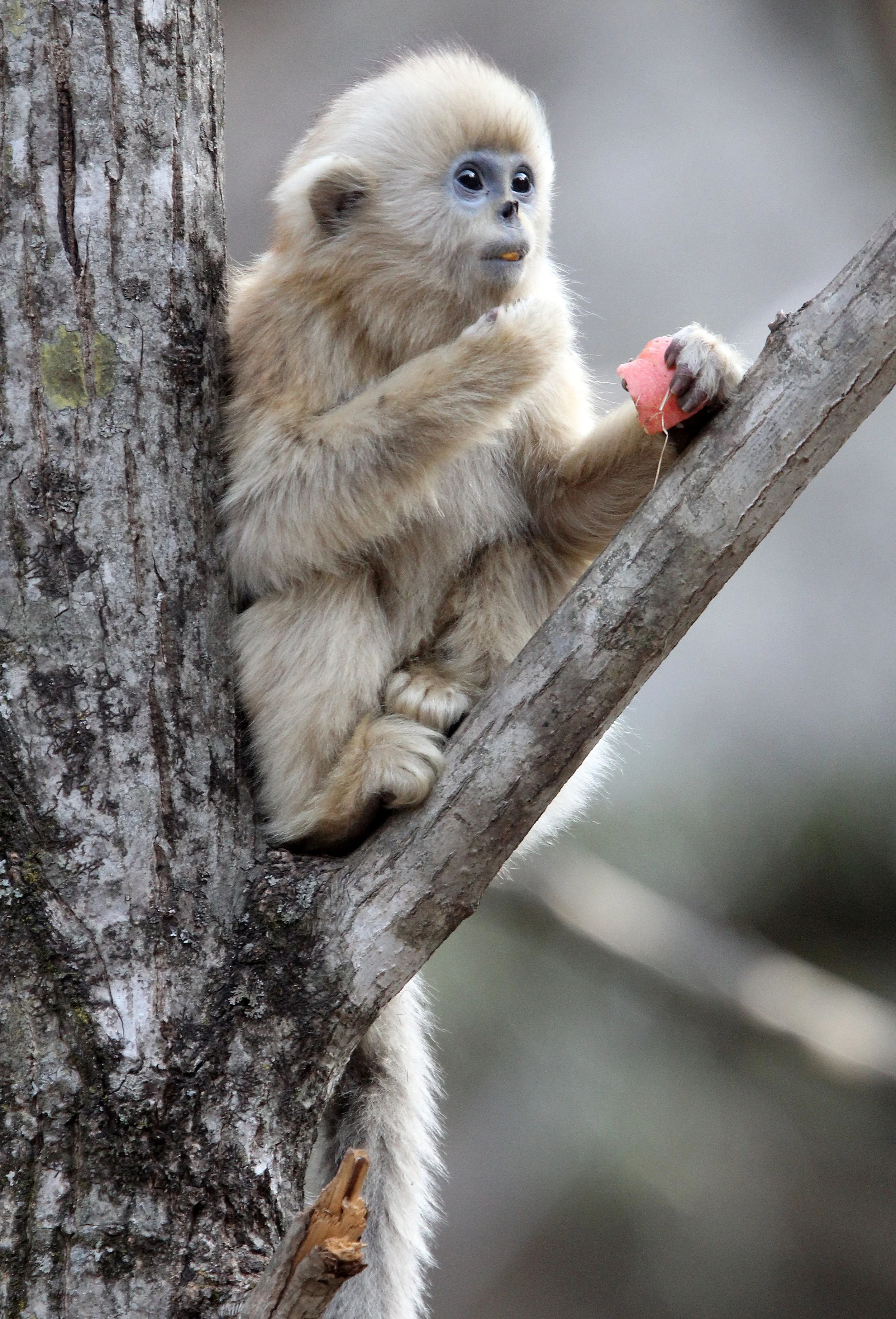
















































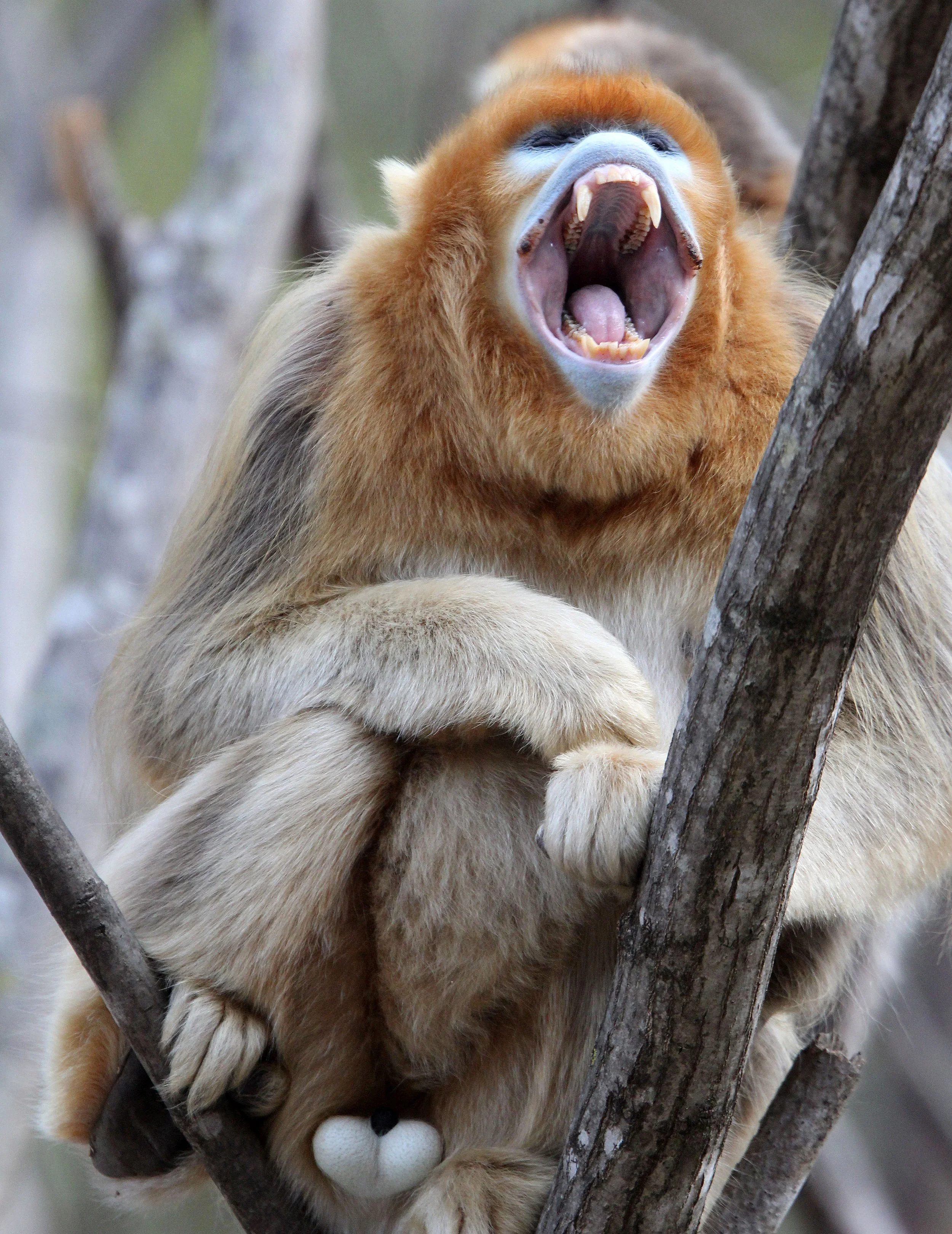






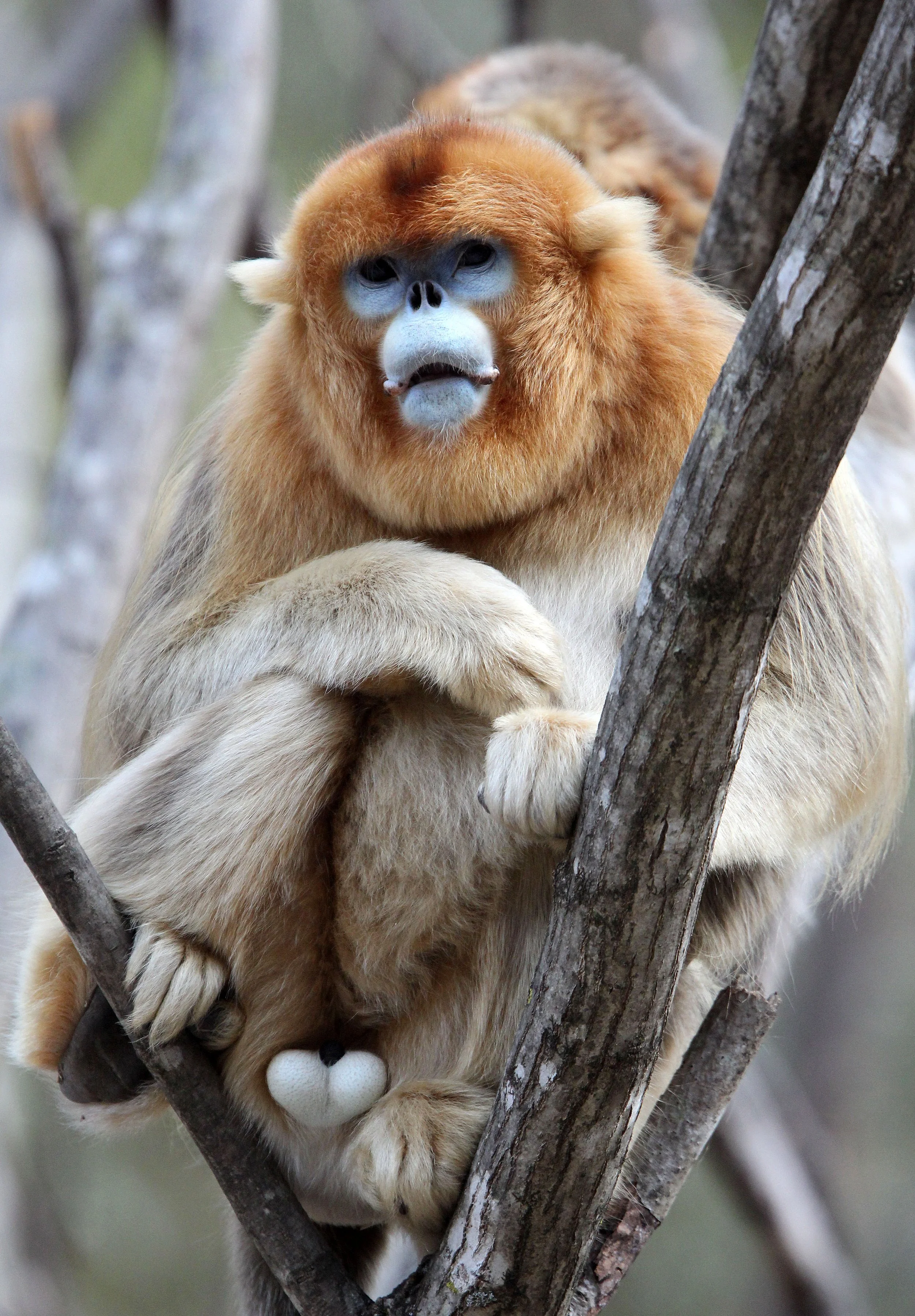
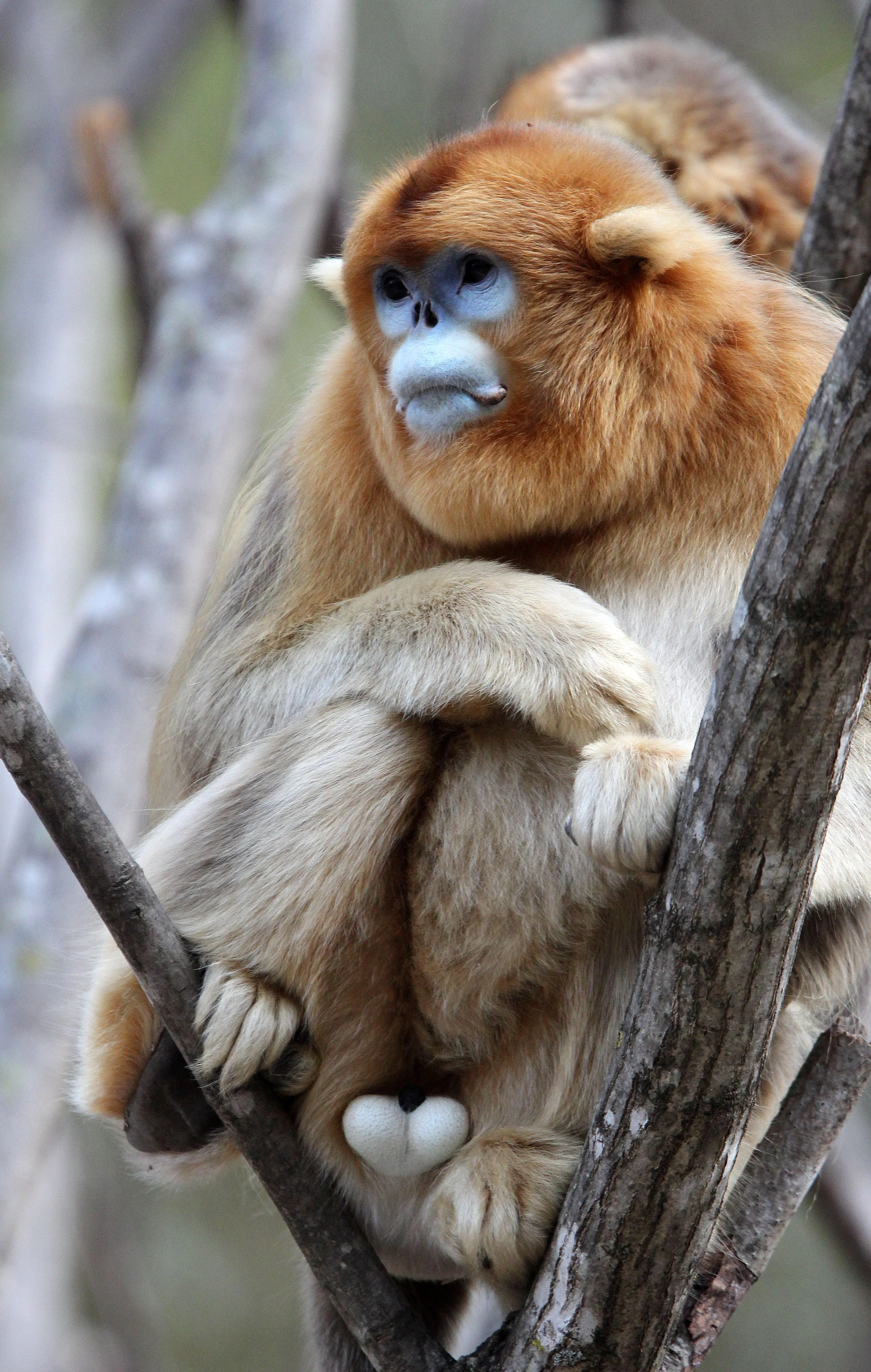


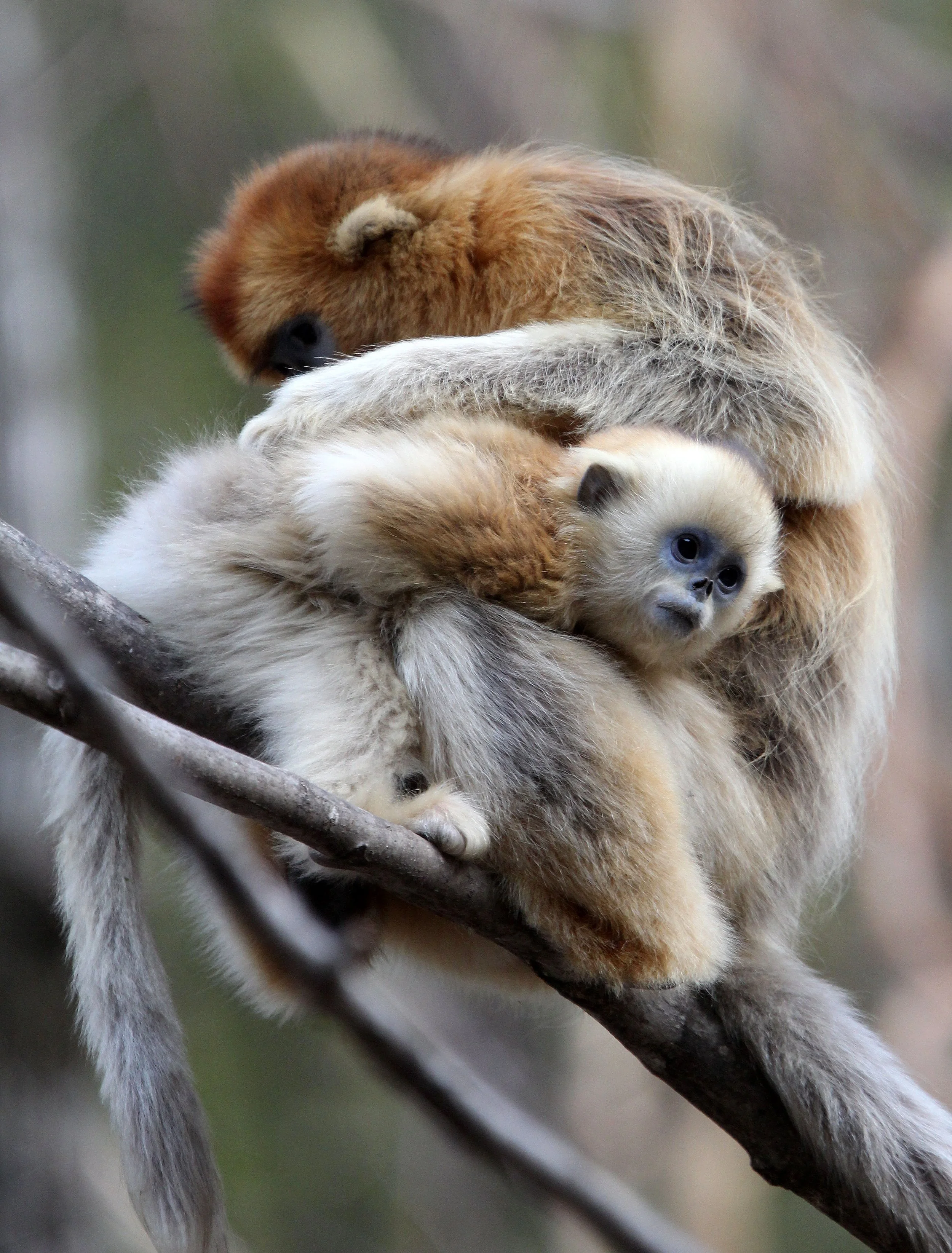











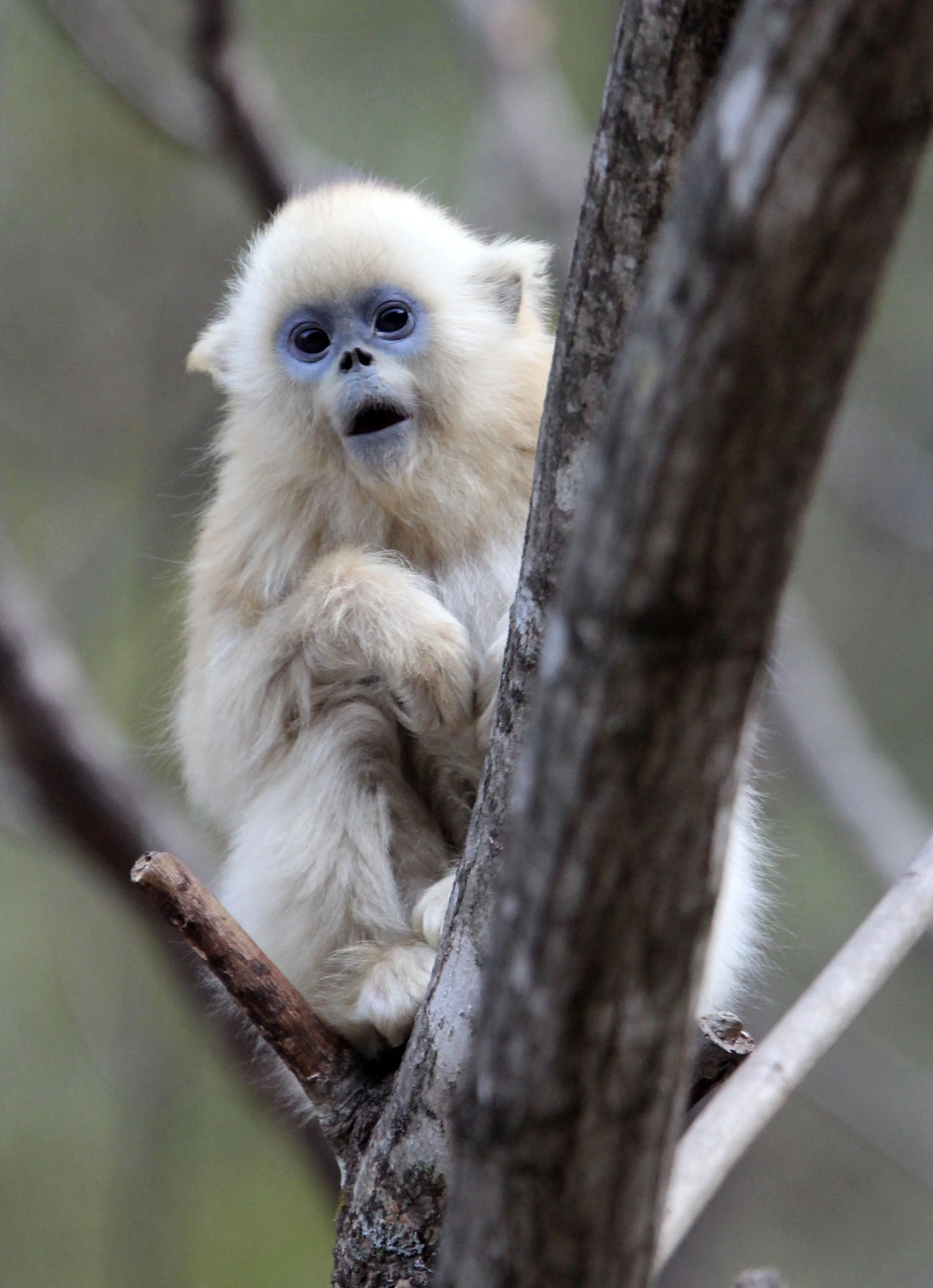

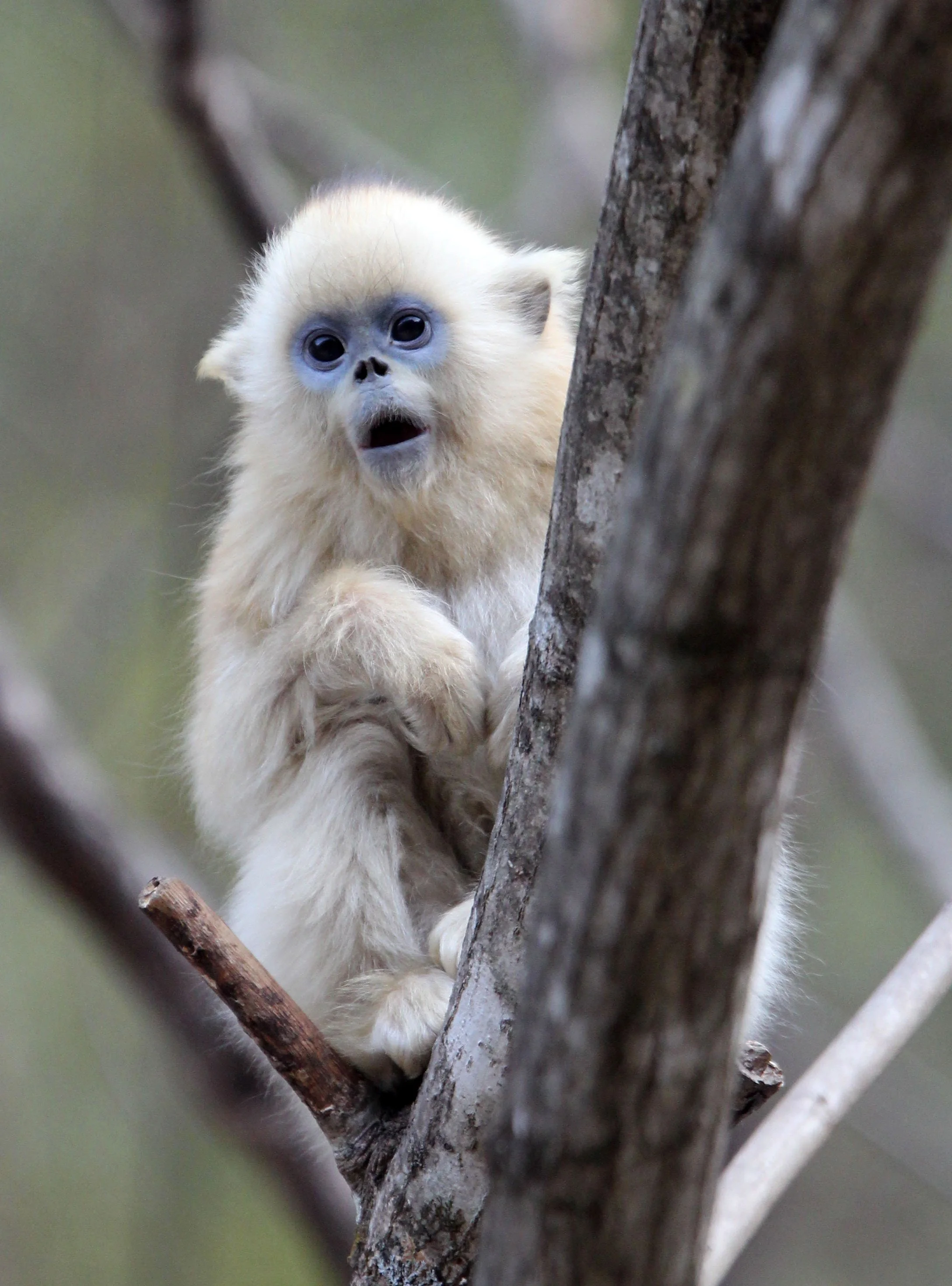




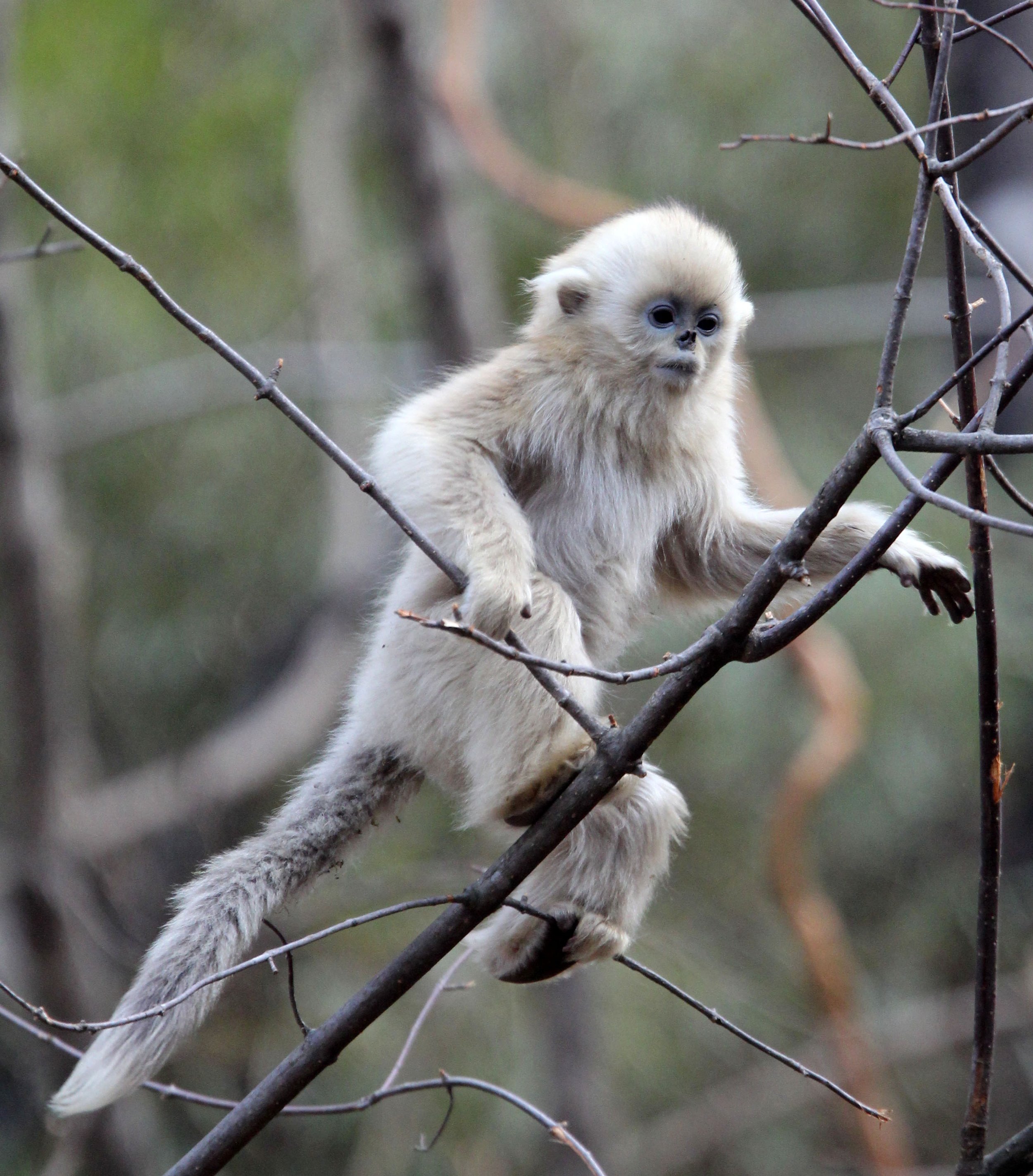



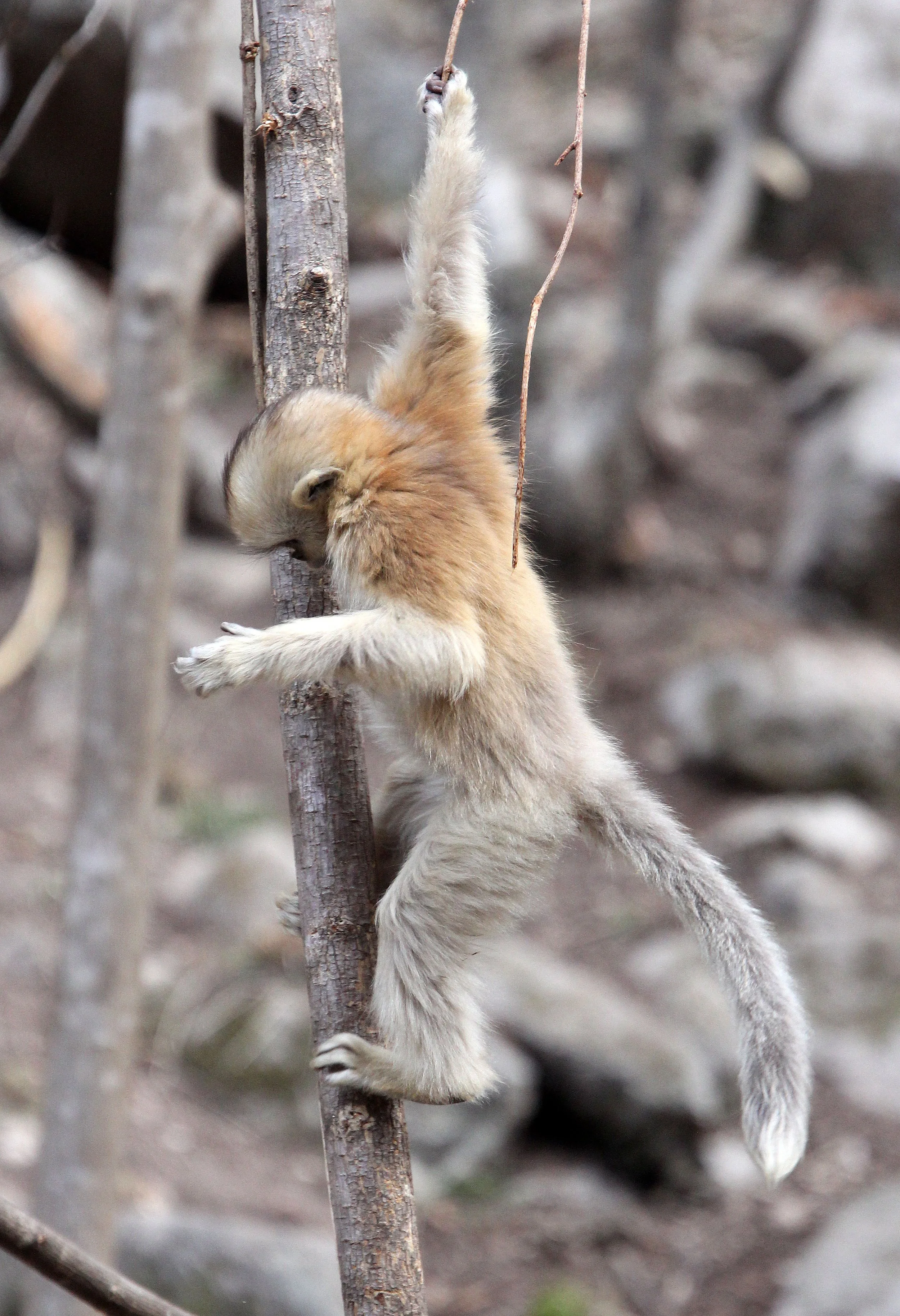
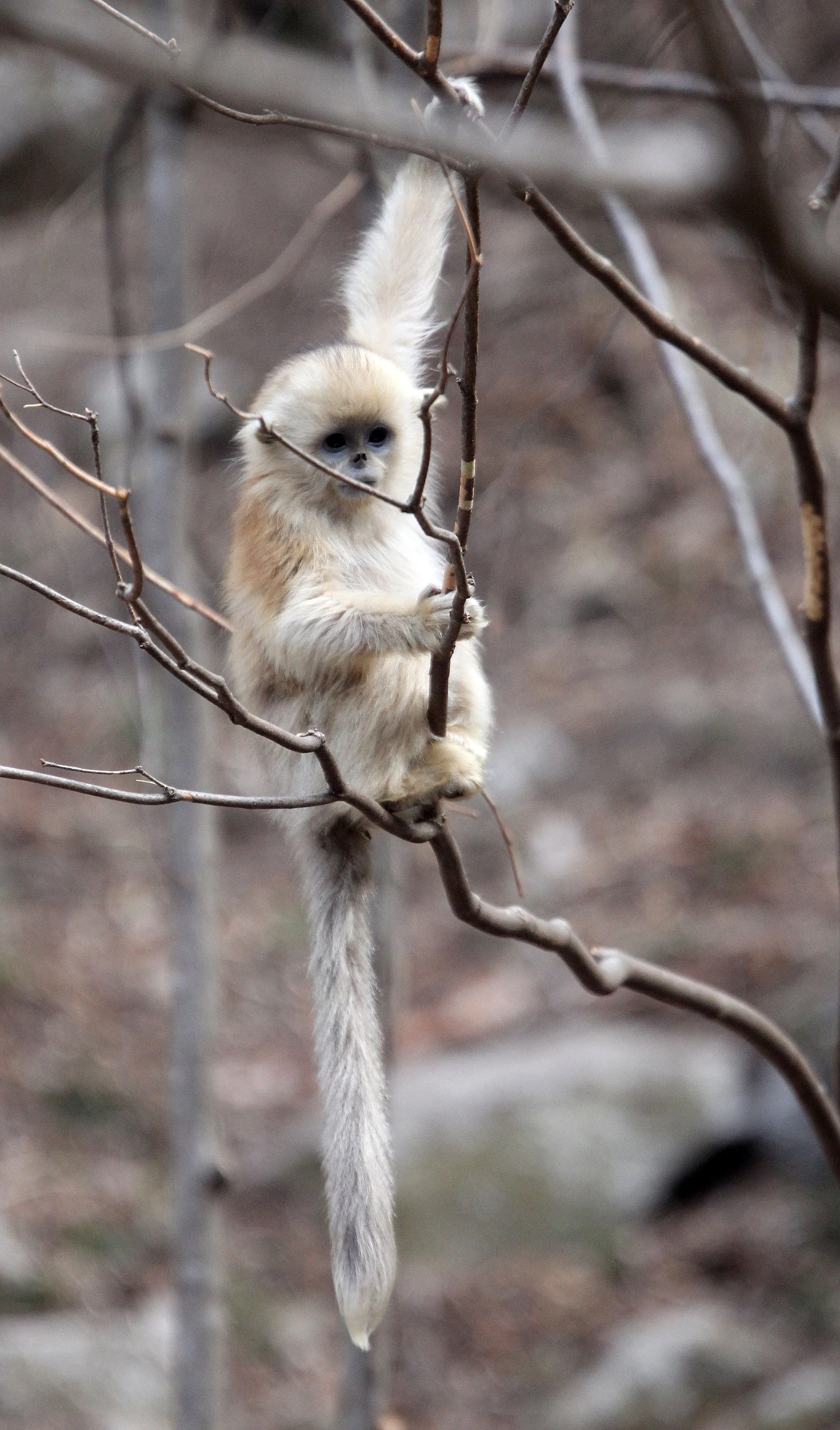



















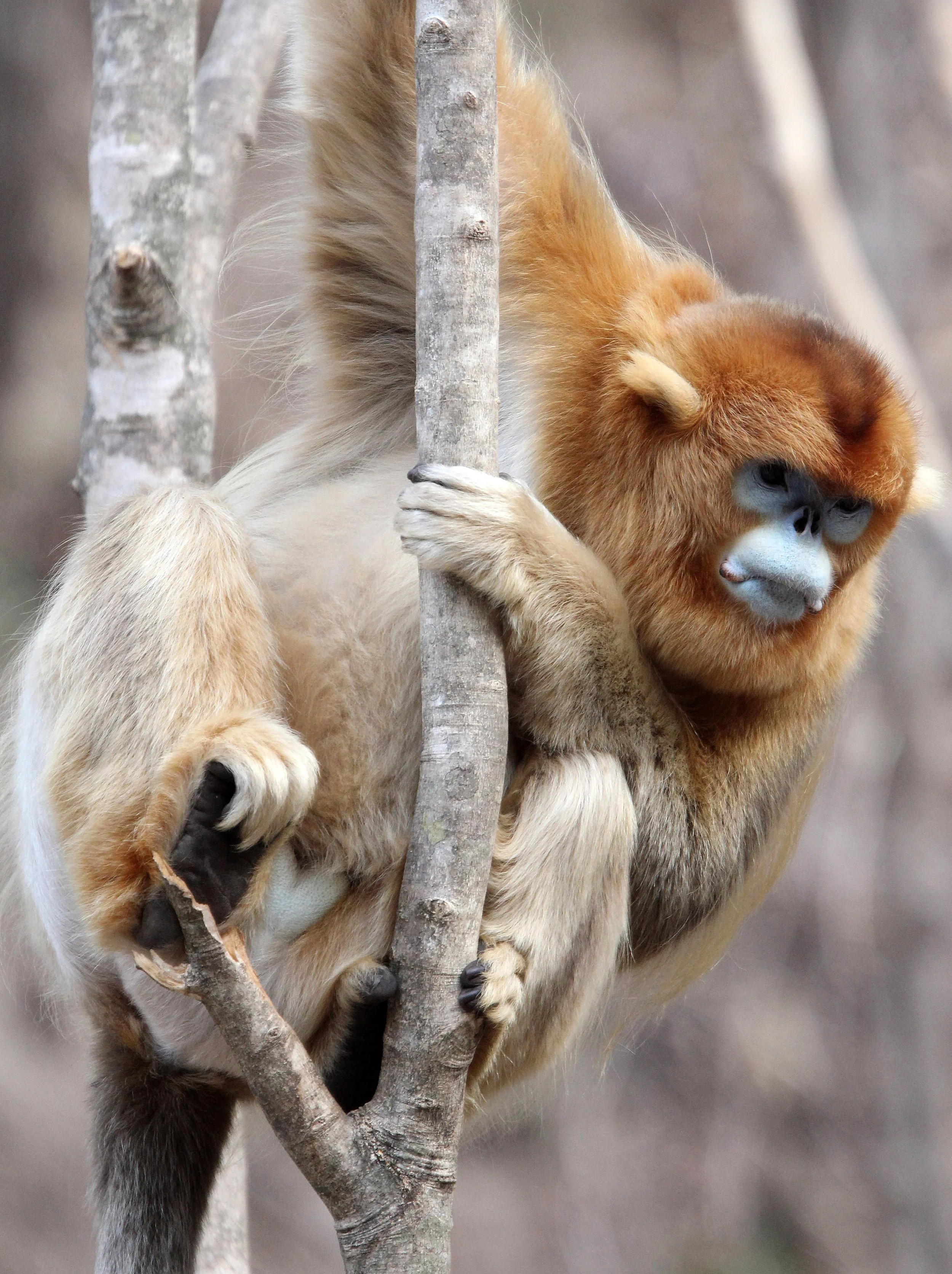



















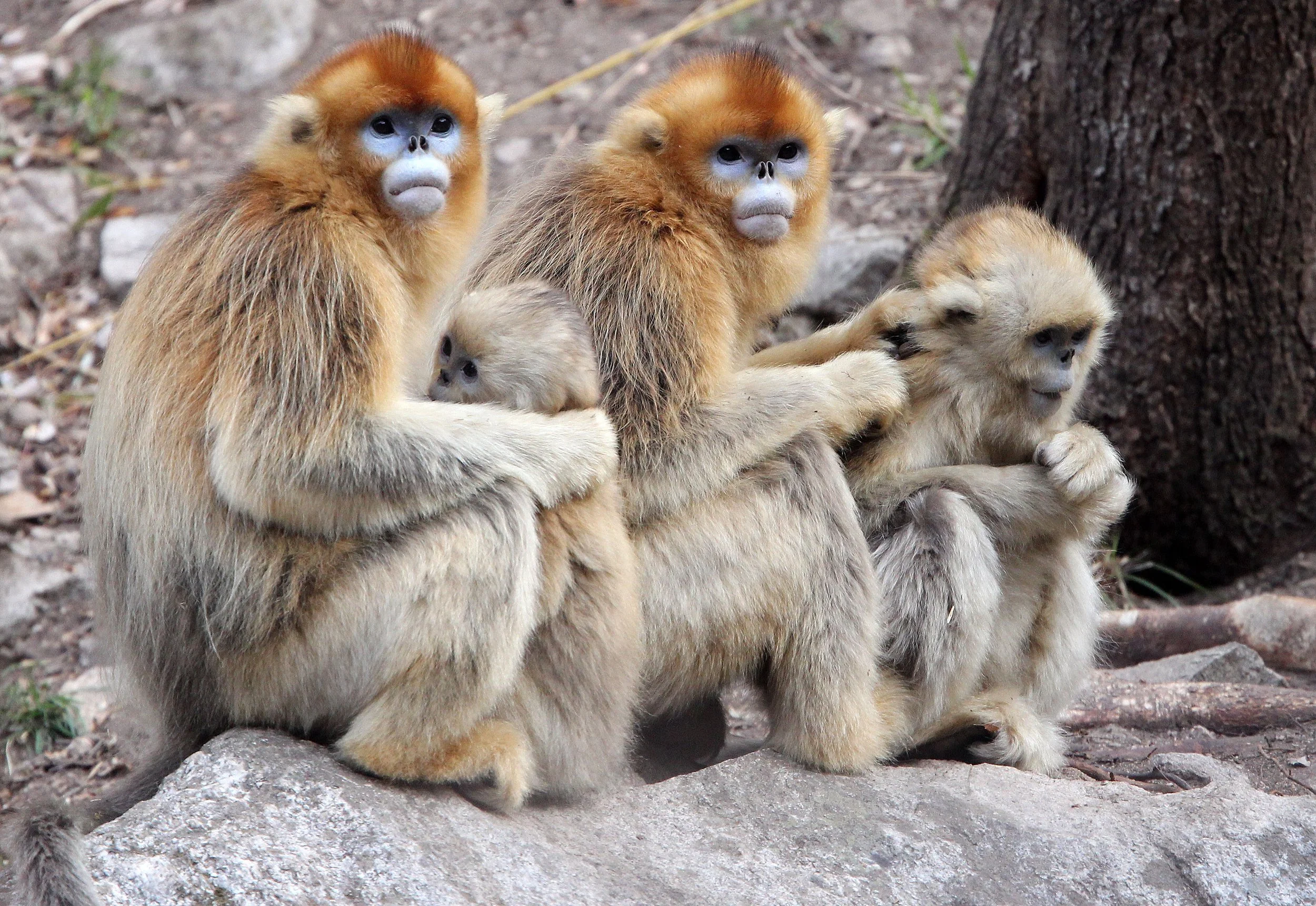








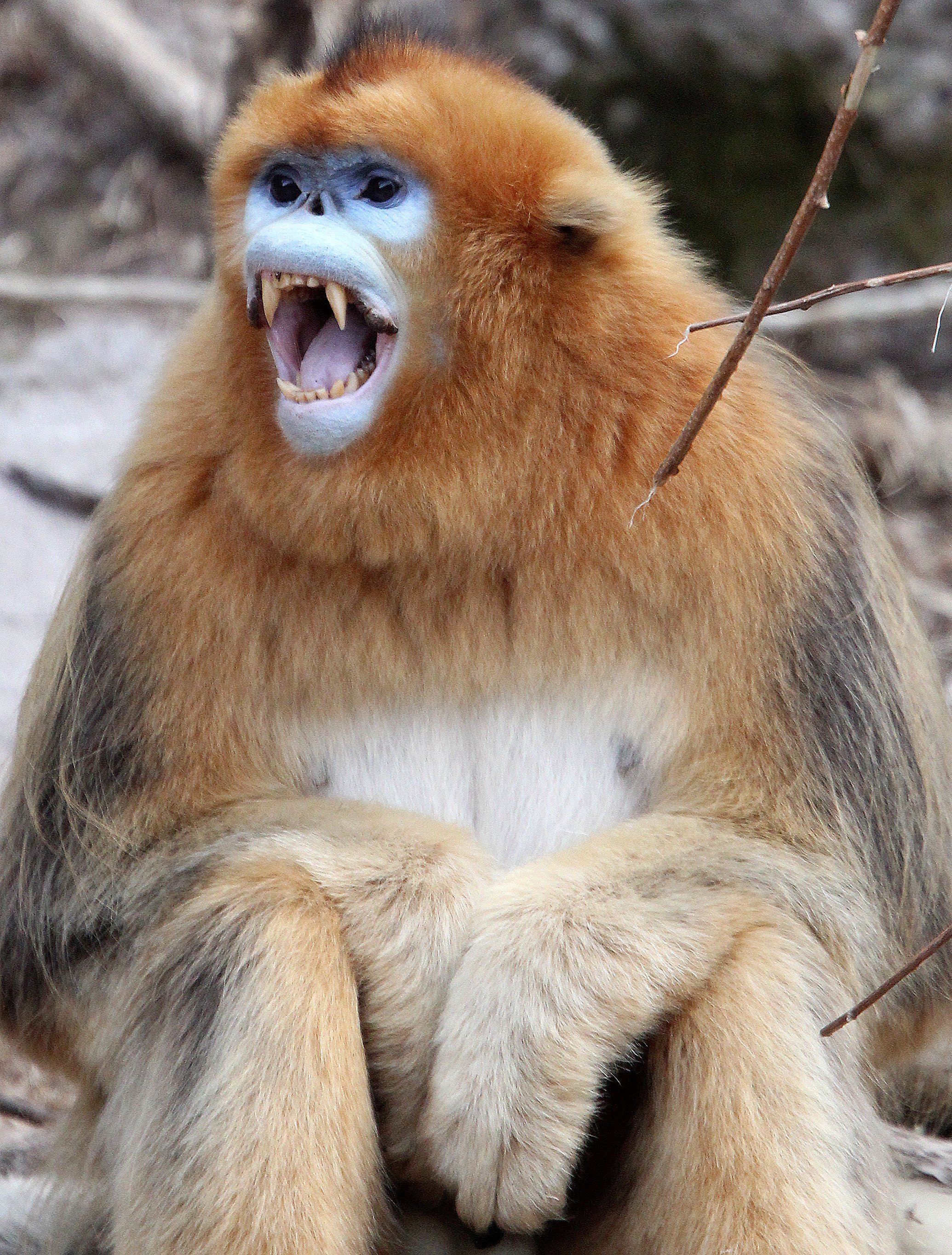


























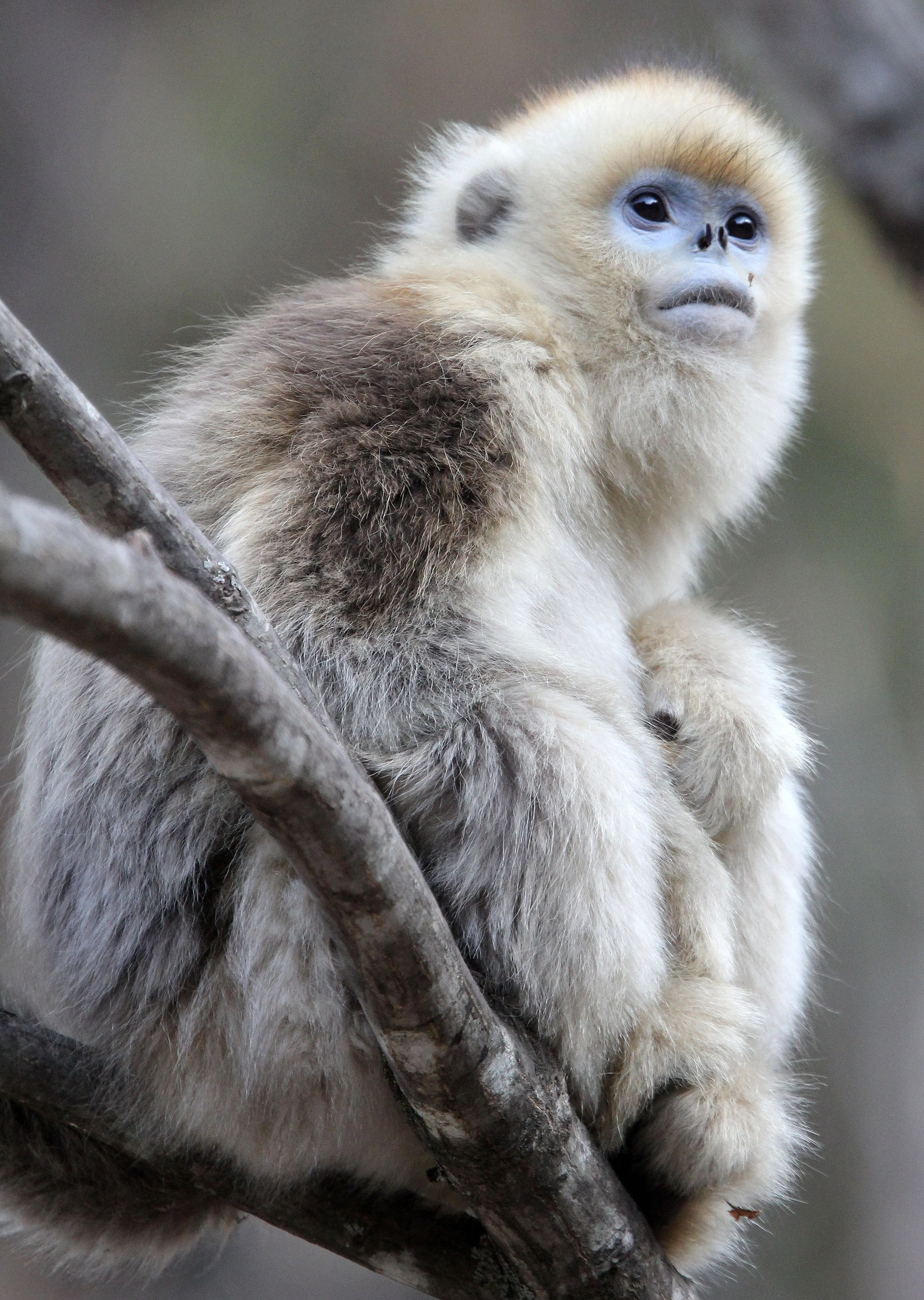














































Moupin Golden Snub-nosed Monkey (Rhinopithecus roxellana roxellana) Captive individuals from Shanghai Zoo


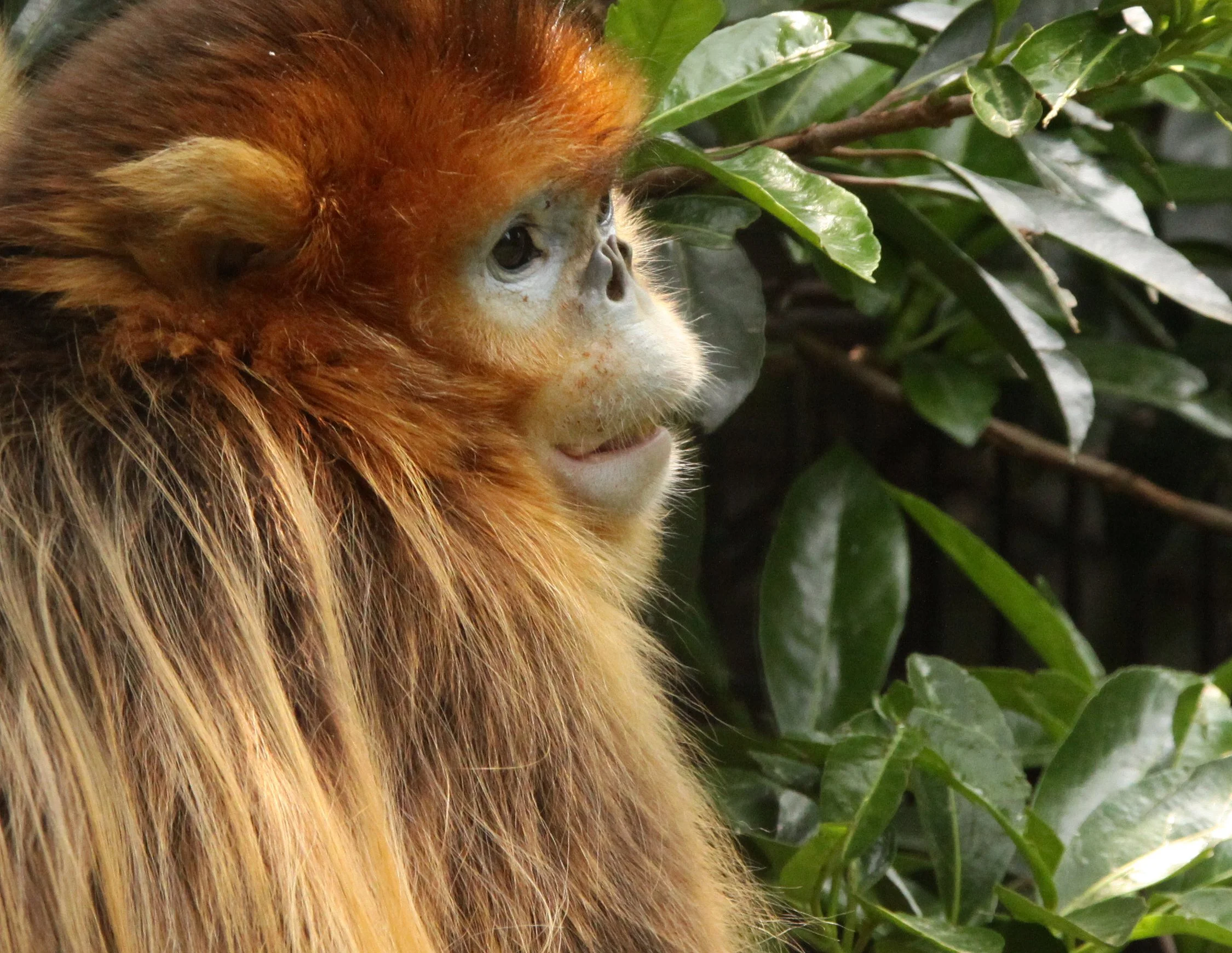






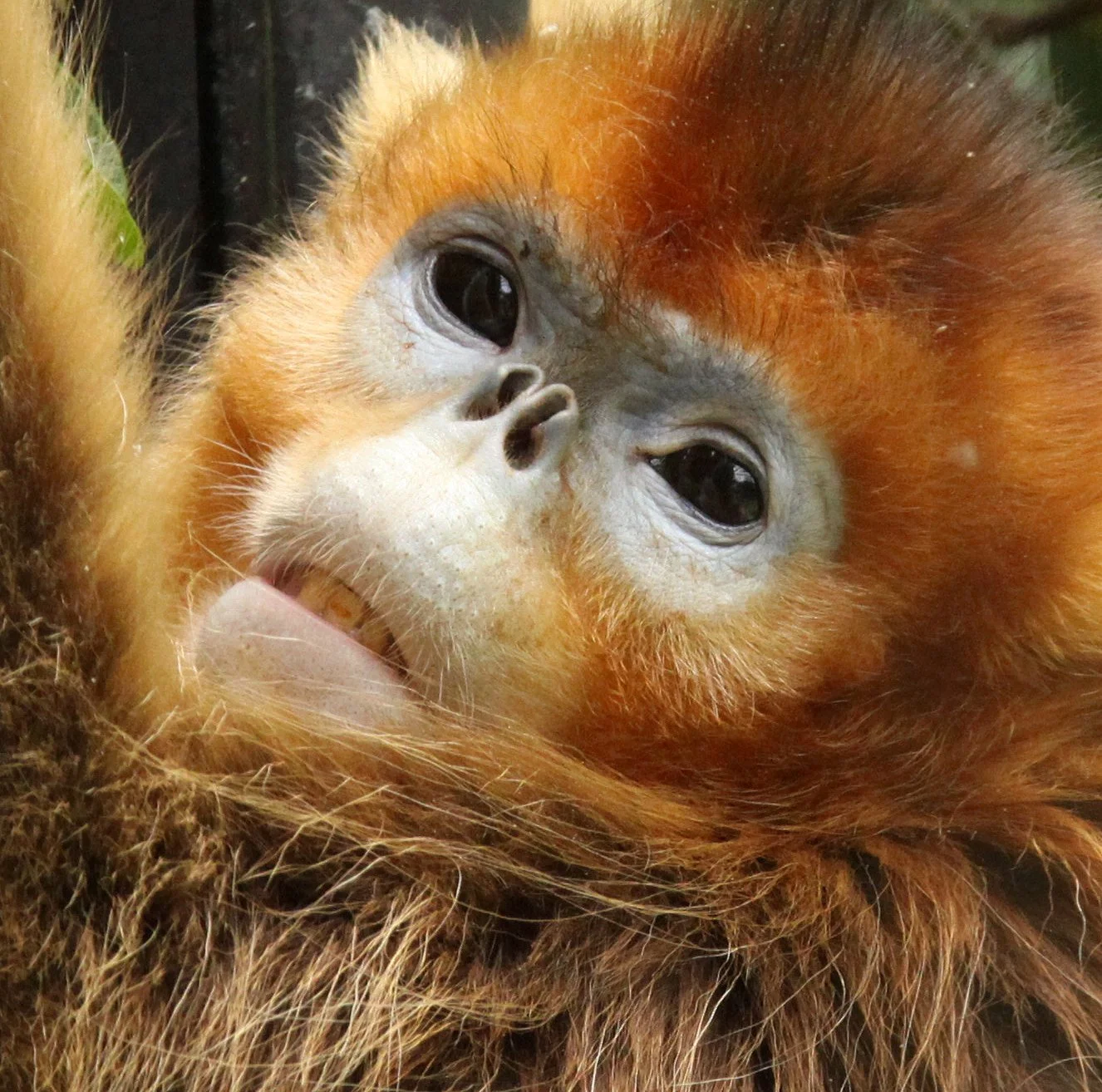
Hubei Golden Snub-nosed Monkey (Rhinopithecus roxellana hubeiensis) wild along the Yangtze River in 1992 cruise seen from ship (in shadows in the upper left hand sector of image)

